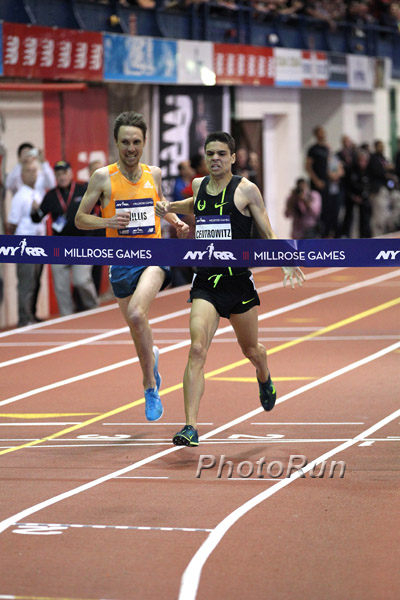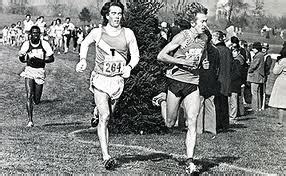The Association of Athletics Managers is nearly eleven years old, having been founded in November 2004. Their most recent meeting was in Lisbon, Portugal, right after the New York City Marathon.
RBR, # 1. How did the Association get started?
AAM: During the summer of 2004, a number of top agents began discussing the formation of a new group that would be more focused on the needs of the athlete and the betterment of the sport. The group officially organized at a meeting in Miami in November of 2004 and issued their press release announcing the new organization on November 11. 2004.
RBR, # 2. What are its goals?
AAM: Per the Press release, the organization was set up “to improve the professional status of the sport of athletics on a worldwide basis. With this in mind, the AAM has determined that we must formulate a program similar to those of the other professional sports throughout the world which will allow for the policing and licensing of managers and agents. It is essential that the managers bind together to improve their status within the sport with the IAAF and all member federations, meeting organizers, sponsors, media and athletes. Accordingly, the AAM and its members have unanimously approved a set of rules and regulations for all members. Our organization is dedicated to assisting athletes in acquiring the best possible individual representation.”
RBR, # 3. How does an agent or manager get recognized by the IAAF?
AAM: A manager or Agent must first be recognized by one of the IAAF member federations. That federation approves the manager (AR) as a person that can represent athletes in that federations country. Once you are approved by the Federation country, the federation then sends their approval of the manager to the IAAF and the IAAF will approve the manager/AR after an application is filed with the IAAF.
RBR, # 4. Why should young athletes seek out a member of the association?
AAM: As stated in our press release, we are dedicated to assist athletes with the best possible individual representation for the athlete’s needs. The athletic world is not an easy map to navigate for a veteran athlete let alone a young athlete. We are there to make the trip easier and more profitable for the young athletes as well as the veterans.
RBR, # 5. Where can people find out more info on the association?
AAM: They can go to our website at www.athleticsmanagers.com. There is a listing of our members as well as the Code of Conduct and Bylaws that we are all required to follow. The Code and Bylaws are in addition to being compliant with the IAAF and member federation guidelines and rules for Managers/ARs.
RBR, # 6. How does the association view the most recent controversies in Kenya?
AAM: We encourage all of our clients to comply with all the rules, including all doping regulations. Members of our organization are not supporting athletes who are trying to break the rules. We welcome the creation of Anti-Doping agency in Kenya and the process and programs that will be enforced. But that is the same for every country in the World.
RBR, # 7. Many people do not understand how important for agents and managers it is for the sport to be professional, how do you respond to that?
AAM: The world of sport has evolved a lot in the last 25 years. As sport has become more professional, athletes need professional representation to manage, market and develop their brands. All the big global sports stars have professional representation and our sport needs to offer the same standard of service if we are to compete with the top sports. Agents and Managers are essential as they are the intermediaries for athletes when dealing with teams (in other professional sports), meet directors, sponsors, media and the like. They are responsible for building the athlete’s brand and the behind the scenes negotiating for the best deals possible for the athletes. They keep the athletes focused on their performances and training by taking care of the financial aspects of the athletes career as well as any other needs that the athlete may have. It’s a partnership to support and help the athlete.
RBR, # 8. What were the main topics at the Lisbon meeting?
AAM: Taking the sport through 2015 and beyond. Focus was on changes that need to be made to bring athletics to the 21st century with marketing ideas, formatting meets so that they are more attractive to the young crowds. Making changes to the marketing and advertising rules that will allow meets and athletes to attract more sponsors to sport. We need make our sport more entertaining to the facebook, twitter, cable TV crowds.
RBR, # 9. How does the association feel about sponsorship logos on uniforms? Will the rules actually change or can they change?
AAM: The Lisbon meeting focused on sponsorship logos on uniforms, advertising in stadiums, additional corporate sponsors for the athletes and meets. We feel that there is room for change and more importantly, we feel that changes do need to be made. All in attendance agreed from the Diamond League meeting directors, World Challenge Meeting directors as well as the IAAF staff present. All feel that changes need to be made and along that like ideas were discussed and will actually be presented to the IAAF.
RBR, #10. Your thoughts on the Diamond League in 2014, and where it goes from here?
AAM: As was stated by the Diamond League members present at our meeting, TV continues to improve for the DL meets. Numbers of viewers continues to improve but there are many things that need to improve such as social media for the DL. Attendance at stadiums needs to improve as well as sponsorship of the series and events. The discussions in Lisbon addressed these concerns and again, ideas were formalized to hopefully improve the series going forward. It will be interesting to see if the AAM working with the Diamond League can help make the some of the ideas and changes in marketing and advertising a reality.
RBR, # 11. Your association’s thoughts on the USATF/Nike deal?
AAM: Not enough is really known about the deal. None of the actual contract language is out there for review and comment so for our organization to comment on just the numbers would not be fair to any party.
RBR, # 12. What should the various footwear brands know about your organization?
AAM: They already are aware of our organization and what we are about and work closely with us. The sportswear manufacturers are a very important and sometimes overlooked stakeholder in our sport. They have attended past annual meetings where we have had great discussion and input from both sides on what we can and cannot do to improve the sport, funding and advertising.
RBR, # 13. How do we improve the quality and experience of track and field on TV?
AAM: Great question. This was discussed in detail at our meeting in Lisbon. Many ideas were reviewed and a number of the proposals were actually agreed to by all present. Most importantly, we felt the TV experience as well as the personal experience had to be enhanced. That means showing the product differently. It had to be more personable, edgy, etc. There are some innovative ideas that we hope will be tried in 2015 with the approval of the IAAF and the meets. We do not want to list them here but we hope they help to begin improving the product.
RBR, # 14. How do we improve the quality of road racing on TV. The Chicago and New York marathons were abysmal?
AAM: Our sport needs to continue working hard to improve it’s presentation on TV. The IAAF and Diamond League spends a lot of time discussing the quality of TV production in an attempt to raise the bar and this has been successful. This is something that other major events can improve on. Often it is in the hands of the host broadcaster but for sure we can’t miss the important moments in a competition.
RBR, # 15. Any new events we should speak about?
AAM: We feel that more events is not the answer. Especially, if it interferes with the Diamond League which is your marque series. We should be trying to improve the DL as well as the World Challenge and make them more popular and successful.
RBR, # 16. Are there too many events in the sport?
AAM: Depends on what is considered too many events. Adding events that interfere with the core events of world athletics would in many peoples opinion hurt the sport as you cannot focus on the core events you want to promote.
RBR, # 17. How does the organization stand on athletes with two year bans?
AAM: Doping is very bad in sport. The sport of Athletics is on the front line fighting this problem. The sport has been considerably damaged by a number of high profile doping cases. The governing bodies have set rules and regulations that are to be complied with. The rules state that an athlete who serves a two year ban and complies with all rules such as being tested and returning funds earned is allowed to compete and cannot be denied the right to compete. The court has upheld that position. So its not our place to judge or comment on the issue.
RBR, # 18. How does the organization stand on possibility of four year bans?
AAM: The AAM welcomes the introduction of four year bans. We need to do all we can to discourage doping in sport and punish those who have cheated honest, hard working athletes out of success.
RBR, # 19. Any thoughts on the approaching departure of Lamine Diack and possibility of new leadership?
AAM: Change in all walks of life is inevitable. President Diack has served the IAAF and the Athletic world to the best of his ability and through a very bad world economy. The IAAF and the athletic world are still here. Hopefully, new leadership will be able to take what President Diack started and advance the athletic world to the next level. The next leaders will have their hands full and they will need the support and open minds of all involved with Athletics to allow the sport to grow as is needed to compete with other sports in the world today.
RBR, # 20. How do we bring the sport to more people?
AAM: Marketing, social media, better presentation of our events, more connections with other sports, more involvement with TV personalities, Sports personalities, entertainers. Anything that will help get the word out on our sport. That’s a great start!!!
Author

Larry Eder has had a 52-year involvement in the sport of athletics. Larry has experienced the sport as an athlete, coach, magazine publisher, and now, journalist and blogger. His first article, on Don Bowden, America's first sub-4 minute miler, was published in RW in 1983. Larry has published several magazines on athletics, from American Athletics to the U.S. version of Spikes magazine. He currently manages the content and marketing development of the RunningNetwork, The Shoe Addicts, and RunBlogRun. Of RunBlogRun, his daily pilgrimage with the sport, Larry says: "I have to admit, I love traveling to far away meets, writing about the sport I love, and the athletes I respect, for my readers at runblogrun.com, the most of anything I have ever done, except, maybe running itself." Also does some updates for BBC Sports at key events, which he truly enjoys. Theme song: Greg Allman, " I'm no Angel."
View all posts





















